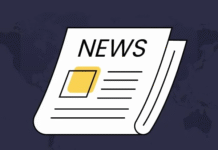Clare: Ministry of Finance Iraq
@MofIraq
Finance Minister Taif Sami is following up with Ernst & Young on the restructuring and merger of the National and Iraqi Insurance Companies and the Industrial Bank, as part of a reform plan that includes electronic payments, enhancing transparency, and training cadres in cooperation with the Central Bank and international organizations.
https://twitter.com/MofIraq/status/1…..6624066036
Foreign reserves between inflation targeting and external rent shocks
5/29/2025
Dr. Haitham Hamid Mutlaq Al-Mansour
Monetary policy relies on a fixed exchange rate system to guide the real exchange rate towards the short-term target inflation rate.
This system is appropriate for the Iraqi economy, as real output values are linked to global prices due to the unilateral structure of the economy and the sharp decline in the contribution of non-oil exports to fixed capital formation.
Therefore, the fixed exchange rate system was a realistic option to avoid the erosion of the value of the dinar.
Due to the impact of external rent shocks, controlling foreign reserves (dollars, gold, and securities included on the asset side of the Central Bank’s balance sheet as Iraq’s external debt) has become an instrumental approach to managing the Central Bank’s responses to the aforementioned shocks.
This involves regulating exchange rate fluctuations, targeting inflation rates. Inflation can rise and fall due to external rent shocks, leading to fluctuations.
Therefore, the Central Bank uses its reserves to sterilize the dinar’s expansion through dollar purchases and sales, and cash transactions in the stock market, both buying and selling, to achieve the target exchange rate.
The movement of foreign reserves is linked to public spending on oil revenues in dollars after the Central Bank exchanges them for dinars to meet demand from the private and public sectors, as well as government and household purchases. Depending on the surplus and deficit in the balance of payments, reserves grow or shrink. When oil revenues rise, the central bank refrains from financing the budget deficit, and the government reduces its spending, aiming to raise foreign reserves to be used to finance the budget deficit when oil revenues decline again.
Foreign reserves witnessed a significant increase due to the positive shock in the second half of 2021, reaching 3.244 million barrels per day at an average price of $110 per barrel.
This increased Iraq’s surplus in public finances and overall external balances, as reserves exceeded $90 billion, helping to stabilize the stabilization system and inflation targeting. However, with global oil prices heading towards a negative shock this year (2025) to less than $60 per barrel, and the Central Bank continuing its sterilization policies and measures towards international compliance, this led to a decline in reserves to less than $97 billion in March 2025, after having been around $105 billion in December 2024. Due to the recent shock, the Central Bank resorted to compensating by increasing its foreign exchange sales.
Therefore, in light of external rent shocks, we see the need for coordination between government policy and the Central Bank. From the government policy side, spending must be restricted to purely technical limits, thus deepening the reduction of the government deficit and strengthening the strategic role of reserves. Monetary policy must sustain its goal of achieving a stable inflation rate by managing the movement of the dollar exchange rate and demand for it in the interest of price stability and reducing costs in favor of rational spending policies.
Achieving low and stable inflation is an important factor in enhancing the local and foreign investment climate, which is linked to related economic policies, including commercial, agricultural, and industrial policies.
In short, the dependence of foreign reserve volatility on external shocks will remain a limiting factor in the national economy’s ability to combat inflation and support the investment climate. Therefore, two levels of optimal solutions can be identified.
The first, at the strategic level, involves sustained coordination between fiscal and monetary policies. The second, at the macro and structural level of the Iraqi economy, lies in addressing the rentier nature of the economy by gradually increasing the contribution of non-oil GDP to meet aggregate domestic demand, while supporting export diversification policies. LINK
************
Courtesy of Dinar Guru: https://www.dinarguru.com/
Frank26 Forex Executive Summary quote: “This memo confirms the Iraqi dinar is fully armed for public rate visibility at $4.81 which activates infrastructure interrogation, live suspension, staging and institutional level confrontation…The rate is suppressed but loaded across all FX-UV telemetry layers…Release is now dependent solely on coordinated political timing optics...” I want you to understand it’s not trading yet. It’s not active yet. It’s not live yet.
Militia Man There’s a reason for the constant avoidance of the 2023/2024 budget schedules. Article 22 paragraph C isn’t exposed yet. You have to ask yourself why haven’t they done that yet. If they were going to be going into the international [world] at 1310…why didn’t they do that at the beginning of 2023? They don’t have an answer for that.
FDIC Admits: Bank Risk Rises as Fed Scrambles for Buyers
Taylor Kenny: 5-29-2025
America’s banks are sitting on over $400B in losses. The FDIC says your deposits are safe—but the math says otherwise. Is your savings account the next casualty? Taylor Kenney breaks it down.
https://www.youtube-nocookie.com/embed/H39dTJEX8bI?feature=oembed&enablejsapi=1
Triple Digit Silver? “MONETARY Demand Will Be the Cause”
Mike Maloney: 5-29-2025
The gold price is currently $3319, the silver price is now $33.38 Are we heading toward $100+ silver? In this eye-opening episode, Mike Maloney breaks down why monetary demand—not industrial use—will be the true catalyst for explosive silver prices.
As global economies teeter on the brink of recession, silver production is slowing, while fear of fiat currencies and systemic risk is driving investor interest like never before.
https://www.youtube-nocookie.com/embed/kW-gTVcaq34?feature=oembed&enablejsapi=1






